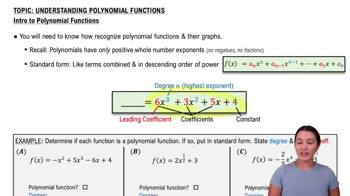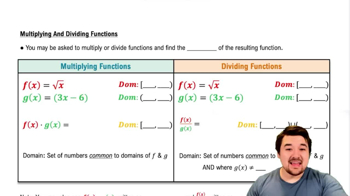Table of contents
- 0. Functions7h 52m
- Introduction to Functions16m
- Piecewise Functions10m
- Properties of Functions9m
- Common Functions1h 8m
- Transformations5m
- Combining Functions27m
- Exponent rules32m
- Exponential Functions28m
- Logarithmic Functions24m
- Properties of Logarithms34m
- Exponential & Logarithmic Equations35m
- Introduction to Trigonometric Functions38m
- Graphs of Trigonometric Functions44m
- Trigonometric Identities47m
- Inverse Trigonometric Functions48m
- 1. Limits and Continuity2h 2m
- 2. Intro to Derivatives1h 33m
- 3. Techniques of Differentiation3h 18m
- 4. Applications of Derivatives2h 38m
- 5. Graphical Applications of Derivatives6h 2m
- 6. Derivatives of Inverse, Exponential, & Logarithmic Functions2h 37m
- 7. Antiderivatives & Indefinite Integrals1h 26m
- 8. Definite Integrals4h 44m
- 9. Graphical Applications of Integrals2h 27m
- 10. Physics Applications of Integrals 2h 22m
4. Applications of Derivatives
Motion Analysis
Problem 23e
Textbook Question
Suppose a stone is thrown vertically upward from the edge of a cliff on Earth with an initial velocity of 32 ft/s from a height of 48 ft above the ground. The height (in feet) of the stone above the ground t seconds after it is thrown is s(t) = -16t2 + 32t + 48.
With what velocity does the stone strike the ground?
 Verified step by step guidance
Verified step by step guidance1
Step 1: Understand the problem. We need to find the velocity of the stone when it strikes the ground. The height function is given by s(t) = -16t^2 + 32t + 48, where s(t) is the height in feet and t is the time in seconds.
Step 2: Determine when the stone hits the ground. This occurs when s(t) = 0. Solve the equation -16t^2 + 32t + 48 = 0 to find the time t when the stone reaches the ground.
Step 3: Use the quadratic formula to solve for t. The quadratic formula is t = (-b ± √(b^2 - 4ac)) / (2a), where a = -16, b = 32, and c = 48.
Step 4: Once you have the value of t when the stone hits the ground, find the velocity at that time. The velocity function v(t) is the derivative of the height function s(t).
Step 5: Differentiate s(t) to find v(t). The derivative of s(t) = -16t^2 + 32t + 48 is v(t) = ds/dt = -32t + 32. Substitute the value of t from Step 3 into v(t) to find the velocity when the stone strikes the ground.
 Verified video answer for a similar problem:
Verified video answer for a similar problem:This video solution was recommended by our tutors as helpful for the problem above
Video duration:
6mPlay a video:
Was this helpful?
Key Concepts
Here are the essential concepts you must grasp in order to answer the question correctly.
Quadratic Functions
The height of the stone is modeled by a quadratic function, s(t) = -16t² + 32t + 48. Quadratic functions are polynomial functions of degree two, characterized by their parabolic shape. Understanding how to analyze and manipulate these functions is crucial for determining the stone's height at any given time and finding when it reaches the ground.
Recommended video:

Introduction to Polynomial Functions
Velocity and Acceleration
Velocity is the rate of change of position with respect to time, and it can be derived from the height function by taking its first derivative, s'(t). In this context, the stone's velocity will change due to gravitational acceleration, which is represented by the coefficient of the t² term in the height equation. Recognizing how to compute and interpret velocity is essential for determining how fast the stone is moving when it strikes the ground.
Recommended video:

Derivatives Applied To Acceleration
Roots of a Function
Finding the roots of the height function s(t) is necessary to determine when the stone hits the ground, which occurs when s(t) = 0. The roots can be found using the quadratic formula or factoring, and they represent the time(s) at which the height of the stone is zero. This concept is fundamental in solving problems involving motion and understanding the behavior of quadratic equations.
Recommended video:

Multiplying & Dividing Functions

 6:29m
6:29mWatch next
Master Derivatives Applied To Velocity with a bite sized video explanation from Nick
Start learning



